Ahsan Wahab
Evaluating Multiway Multilingual NMT in the Turkic Languages
Sep 13, 2021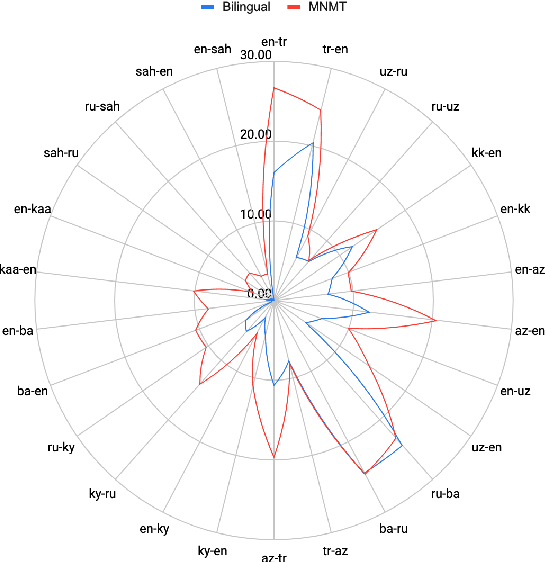
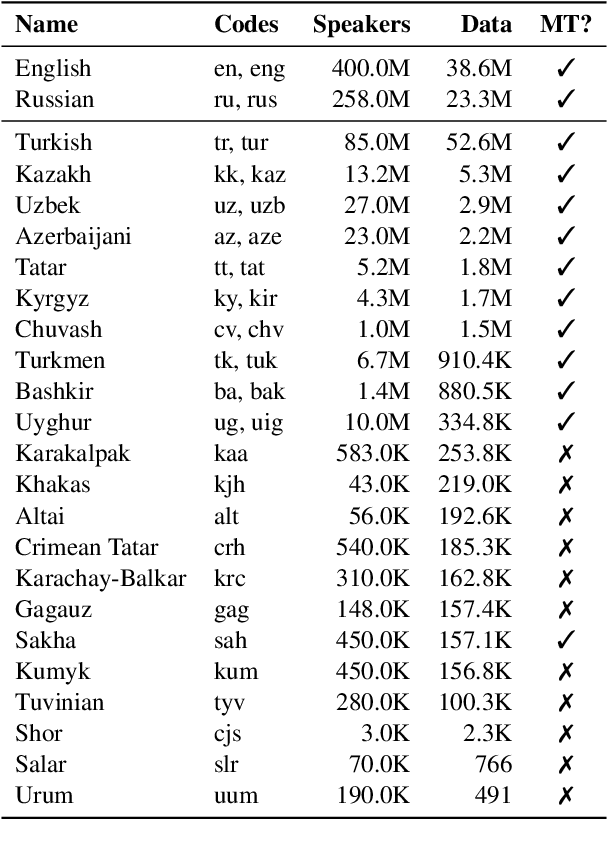
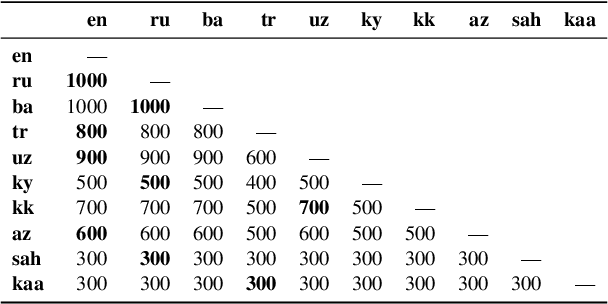
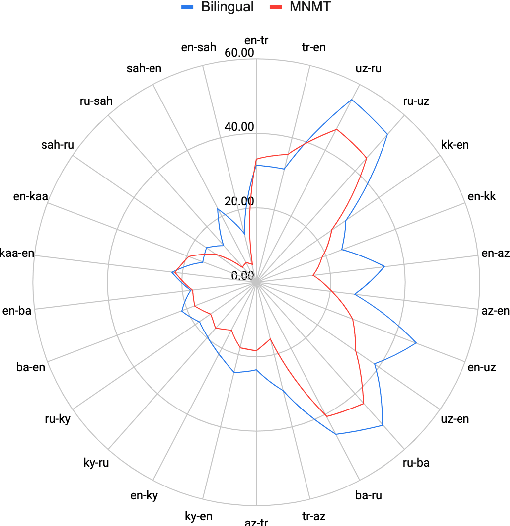
Abstract:Despite the increasing number of large and comprehensive machine translation (MT) systems, evaluation of these methods in various languages has been restrained by the lack of high-quality parallel corpora as well as engagement with the people that speak these languages. In this study, we present an evaluation of state-of-the-art approaches to training and evaluating MT systems in 22 languages from the Turkic language family, most of which being extremely under-explored. First, we adopt the TIL Corpus with a few key improvements to the training and the evaluation sets. Then, we train 26 bilingual baselines as well as a multi-way neural MT (MNMT) model using the corpus and perform an extensive analysis using automatic metrics as well as human evaluations. We find that the MNMT model outperforms almost all bilingual baselines in the out-of-domain test sets and finetuning the model on a downstream task of a single pair also results in a huge performance boost in both low- and high-resource scenarios. Our attentive analysis of evaluation criteria for MT models in Turkic languages also points to the necessity for further research in this direction. We release the corpus splits, test sets as well as models to the public.
A Large-Scale Study of Machine Translation in the Turkic Languages
Sep 09, 2021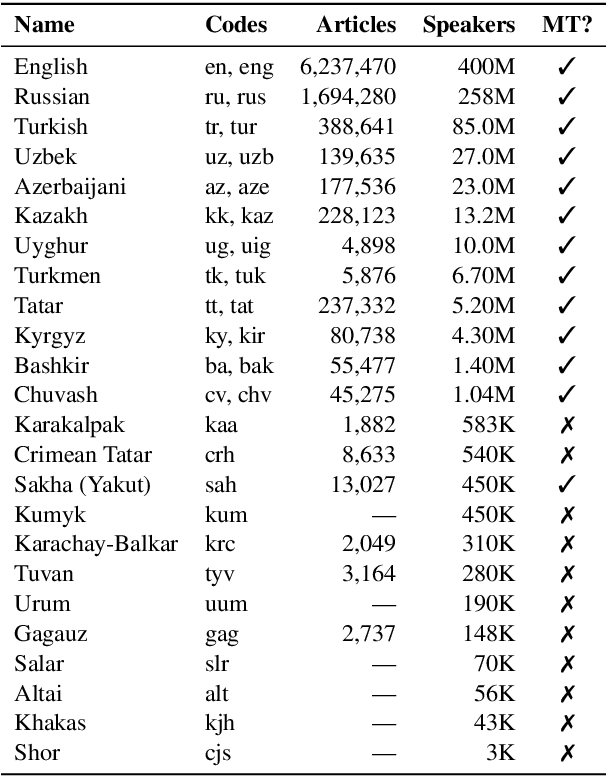
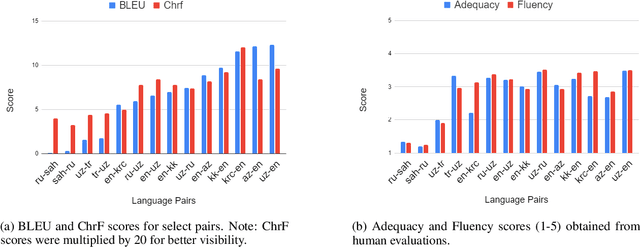
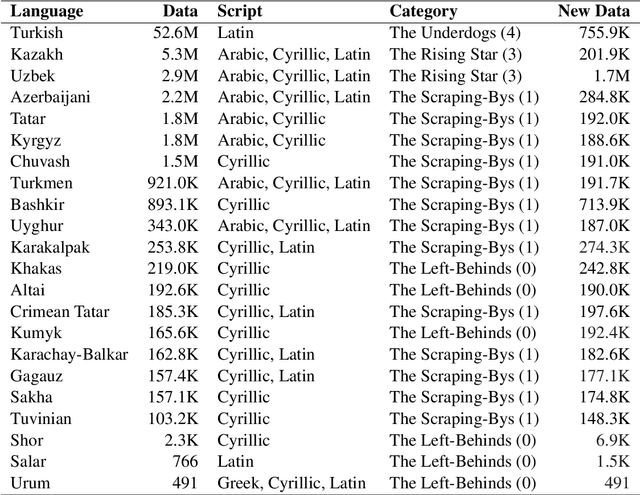
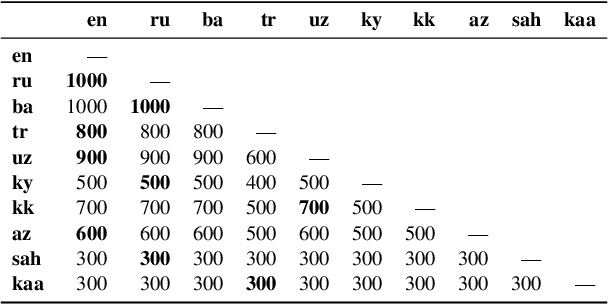
Abstract:Recent advances in neural machine translation (NMT) have pushed the quality of machine translation systems to the point where they are becoming widely adopted to build competitive systems. However, there is still a large number of languages that are yet to reap the benefits of NMT. In this paper, we provide the first large-scale case study of the practical application of MT in the Turkic language family in order to realize the gains of NMT for Turkic languages under high-resource to extremely low-resource scenarios. In addition to presenting an extensive analysis that identifies the bottlenecks towards building competitive systems to ameliorate data scarcity, our study has several key contributions, including, i) a large parallel corpus covering 22 Turkic languages consisting of common public datasets in combination with new datasets of approximately 2 million parallel sentences, ii) bilingual baselines for 26 language pairs, iii) novel high-quality test sets in three different translation domains and iv) human evaluation scores. All models, scripts, and data will be released to the public.
Quality at a Glance: An Audit of Web-Crawled Multilingual Datasets
Mar 22, 2021
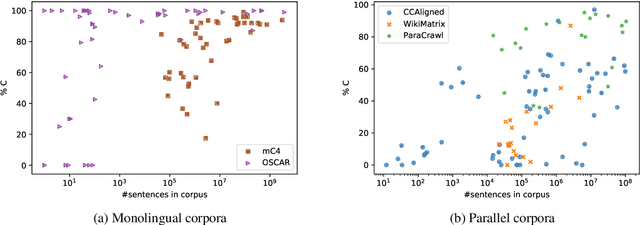
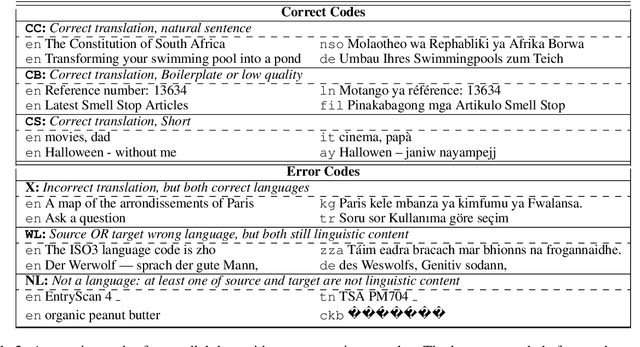
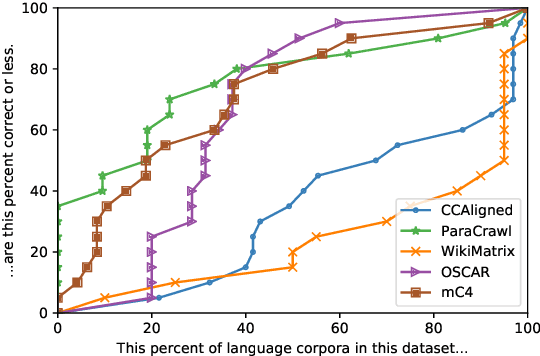
Abstract:With the success of large-scale pre-training and multilingual modeling in Natural Language Processing (NLP), recent years have seen a proliferation of large, web-mined text datasets covering hundreds of languages. However, to date there has been no systematic analysis of the quality of these publicly available datasets, or whether the datasets actually contain content in the languages they claim to represent. In this work, we manually audit the quality of 205 language-specific corpora released with five major public datasets (CCAligned, ParaCrawl, WikiMatrix, OSCAR, mC4), and audit the correctness of language codes in a sixth (JW300). We find that lower-resource corpora have systematic issues: at least 15 corpora are completely erroneous, and a significant fraction contains less than 50% sentences of acceptable quality. Similarly, we find 82 corpora that are mislabeled or use nonstandard/ambiguous language codes. We demonstrate that these issues are easy to detect even for non-speakers of the languages in question, and supplement the human judgements with automatic analyses. Inspired by our analysis, we recommend techniques to evaluate and improve multilingual corpora and discuss the risks that come with low-quality data releases.
 Add to Chrome
Add to Chrome Add to Firefox
Add to Firefox Add to Edge
Add to Edge